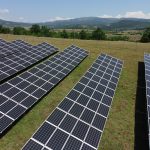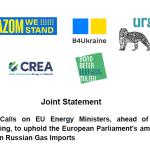The Recovery and Resilience Facility (RRF) provides member states a large-scale financial support for public
investments and reforms to support the relaunching of ailing economies in the short term, but also the
creation of more sustainable and resilient societies for the future. To do so, RRF funding must also be
allocated to address the other, worsening long-term crisis: climate change and nature destruction.
To access RRF funding, member states need to draft Recovery and Resilience Plans (RRPs) which need to
meet a series of environmental conditionalities. First, at least 37% of investments contained in each RRP
should support climate objectives. Second, each reform and each investment should comply with the ‘do no
significant harm’ principle (DNSH), i.e., no measure in the plans should cause “significant harm” to the
environment. Finally, measures in the RRPs should be compliant with existing EU environmental legislation
and deliver on the European Green Deal objectives.
As of June 2, 2021, at least 23 member states have submitted their RRPs to the European Commission). CEE
Bankwatch, Climate Action Network (CAN) Europe, EuroNatur and the European Environmental Bureau (EEB)
have put together assessments of Recovery and Resilience Plans from 14 countries – Bulgaria, Croatia, Czech
Republic, Greece, Estonia, France, Hungary, Italy, Latvia, Poland, Portugal, Romania, Slovakia and Slovenia.
This paper summarizes the main findings of the assessments of RRPs conducted at national level. The
country-specific analyses move from the abovementioned environmental conditionalities, highlighting:
- Whether the 37% climate action target is met or not, including expenditures labelled as climate
action which should not be considered as such - Whether there are measures that risk breaching the ‘do no significant harm’ principle
- Whether there are measures not complying with existing EU environmental legislation, policy and
strategies.
This paper does not aim at providing a final and exhaustive evaluation of the plans – which in several
circumstances would not even be possible due to the severe lack of transparency around them. Rather, it
points out critical elements of the RRPs, on which decision makers should urgently intervene to maximise
their climate ambition and impact, and to prevent damage to the climate and nature.
DOWNLOAD HERE Recovery and Resilience Plans Assessment_June2021



